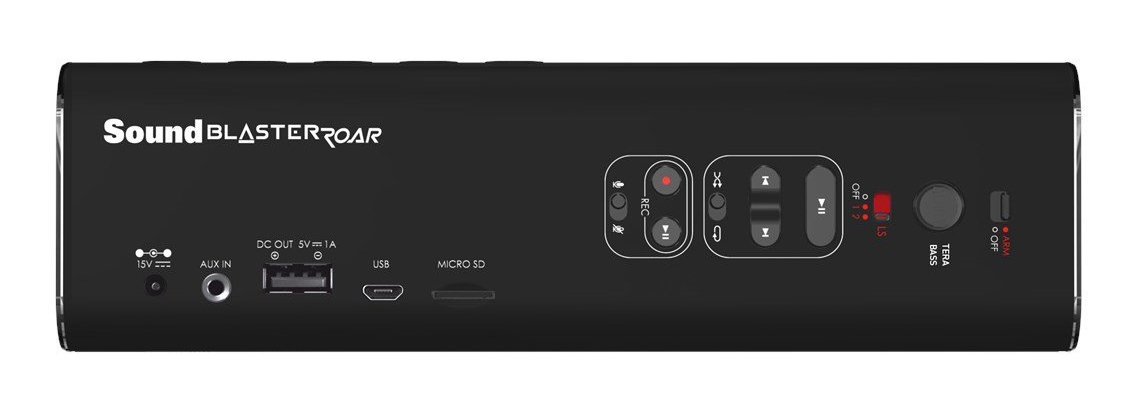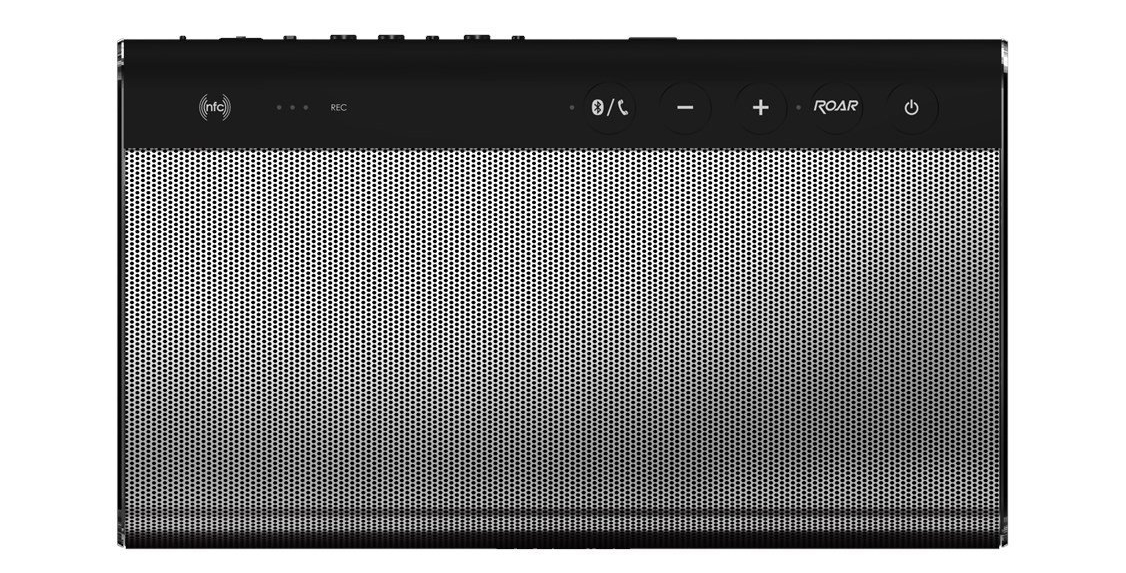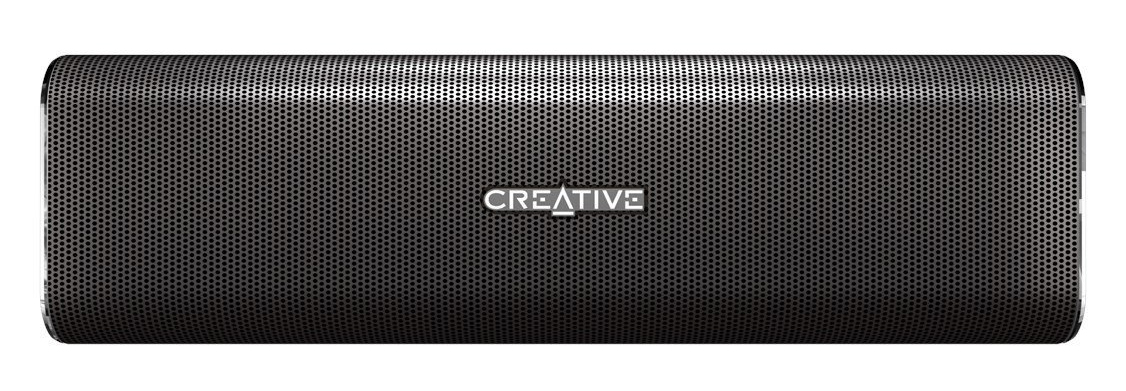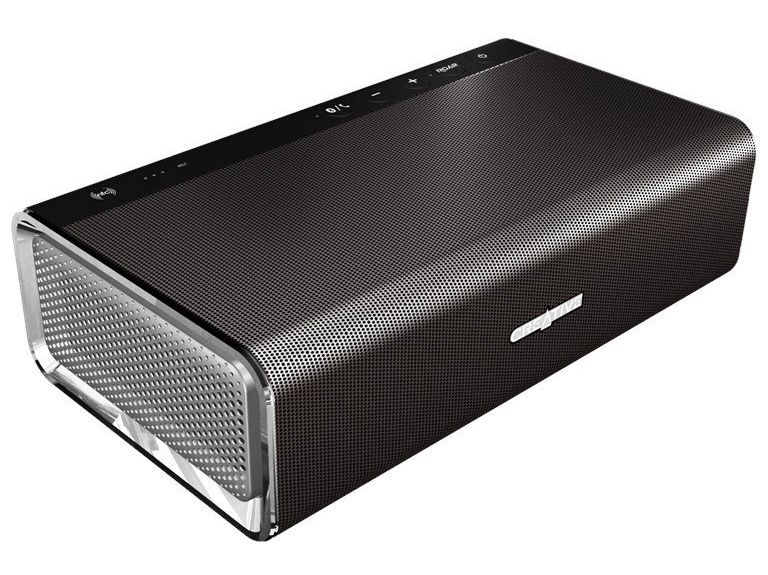Tom's Guide Verdict
The Creative Sound Blaster Roar is a Bluetooth speaker that delivers big and bold audio for a reasonable price.
Pros
- +
Rich sound and booming bass
- +
Functions as an external battery for mobile devices
- +
Can connect to a PC
- +
MicroSD card slot
- +
NFC-enabled
Cons
- -
Complex controls
- -
Heavy for a portable
- -
Shorter battery life than competition
Why you can trust Tom's Guide
Many portable Bluetooth speakers strive for ultimate simplicity: connect and play. Creative's $150 Sound Blaster Roar goes to the opposite extreme — the company packed in just about every feature you can think of, such as the ability to charge gadgets on the go. And while not all the features work great or seem necessary, Creative nailed the thing that matters most: sound quality.
Design
The Sound Blaster Roar's conservative design belies the tech packed inside. The 7.9 x 4.5 x 2.2-inch metal case houses two 1.5-inch drivers for treble and midrange tones. Creative added a 2.5-inch subwoofer on the top, along with passive radiators on each side. The result is impressive sound (more on that later).

The Roar is more than a wireless speaker, though. Harkening back to Creative's roots as a PC audio and MP3 player company, the Sound Blaster Roar allows you to insert a microSD card to play MP3s directly from the speaker using the controls on the back. You can also record audio to that microSD card — either through the unit's microphone or whatever's playing on the speaker (which makes recording streaming audio easy, though probably not legal). I recorded songs I streamed through Spotify, but the recording quality is much lower than the original, in order to keep file size small (and probably to discourage piracy).

But wait, there's more: The Roar can also act as an external battery to charge mobile devices via USB. With its 6,000-mAh battery, you should be able to charge a mobile phone a couple of times. And then there's the alarm, which emits a loud siren. I can't imagine why anyone would need that, but it's there.
MORE: Best Bluetooth Speakers
All this tech weighs the unit down. At 2.5 pounds, the Sound Blaster Roar is one of the heavier portable speakers I've tested. In comparison, the Bose SoundLink Mini weighs just 1.5 pounds. But without any weatherproofing or other ruggedness features, the Roar seems best suited for indoor duty.
Setup and Use
The Roar paired quickly with iOS and Android devices. Push the Bluetooth button on top of the unit to put the speaker in discovery mode. To connect to the Roar on an Android device, go to Settings and look for the speaker listed in Available Devices. If you have an NFC-equipped Android device, just touch the speaker and the mobile device together for the fastest pairing. In iOS, go to Settings > Bluetooth, where SB ROAR should appear under Devices.
You can also connect to the headphone jack on your smartphone or tablet through the 3.5mm auxiliary input on the back.

In addition, you can directly connect the Roar to your computer via micro USB. If you use it as your computer speaker, you can download the Sound Blaster Control Panel software for Mac or Windows. This adds several presets to adjust the sound, like Warm Sound, which tries to emulate a tube amp, and Dynamic Boost, which increases the vocal track on movies. The software also includes an adjustable equalizer for more flexibility.
Because it includes so many features, the Roar is more difficult to use than many portable Bluetooth speakers. Using it as a wireless speaker is simple, but if you want to make it work with your PC, for example, you need to remember to press the Play/Pause button for 5 seconds. I recommend keeping the manual on hand to remember how to enable certain functions.
Audio Performance
The Roar takes full advantage of its three drivers. The dual 1.5-inch drivers deliver a wider sound than smaller units. This was especially evident on Lorde's "Team"; it seemed like her voice was surrounding me. The drivers also produce sharp treble and warm midrange tones. The snare drum and cymbals on indie rock band Spoon's "Outlier" sounded crisp, while the saxophones on Charles Mingus' jazz classic "Goodbye Pork Pie Hat" felt warm and realistic.

The Roar includes two sound mode buttons on the unit: the Roar button boosts midranges, while TerraBass ups the bass output. (Push the Alarm button to enable this feature; this is another example of needing the manual to get the most out of the speaker.) Both of these sound-mode buttons further improve the audio quality. With TerraBass turned on, the Roar was one of the few portable speakers capable of rumbling the table on the Beastie Boys' "Shake Your Rump."
Dollar for dollar, the Sound Blaster Roar produces the best sound of any portable Bluetooth speaker I've heard. The bass response is comparable to that produced by the Bose SoundLink Mini, but the Bose costs $50 more. While the Fugoo Style beats the Roar in the treble and midranges, the Fugoo doesn't produce nearly as much bass.
Speakerphone
Like many portable Bluetooth speakers, the Roar includes a speakerphone. However, I found it didn't perform as well as other speakers such as the UE Boom. On one call, the recipient reported that my voice broke up and sounded muffled, but on others, it was clearer and comparable to the iPhone's speakerphone clarity.
MORE: Best Soundbars
Battery Life and Charging
Creative says the Roar can play for 8 hours on a full charge, and it exceeded that claim in my testing. I listened at moderate volume for at least 10 hours before I needed to recharge the device. If you use the Roar to charge other devices, you can expect less playing time.

Even at 10 hours, the Roar has less battery life than other portables such as the UE Boom, which plays for 15 hours, or the Fugoo Style, which goes for 40 hours on a full charge.
Although the Roar comes with a 15V power adapter and has a power port, the speaker can also be recharged via its micro USB connection.
Bottom Line
If you're looking for a semiportable Bluetooth speaker that you'll mainly use inside to listen to music, the $150 Creative Sound Blaster Roar is hard to beat. It's cheaper and includes far more features than the Bose SoundLink Mini, and it offers better bass than the Fugoo Style. While you may not use most of the extra features it packs (and when you do, you'll likely need to crack open the manual), it's the Roar's big sound that makes it a great value.

Michael Gowan is a freelance technology journalist covering soundbars, TVs, and wireless speakers of all kinds of shapes and sizes for Tom’s Guide. He has written hundreds of product reviews, focusing on sound quality and value to help shoppers make informed buying decisions. Micheal has written about music and consumer technology for more than 25 years. His work has appeared in publications including CNN, Wired, Men’s Journal, PC World and Macworld. When Michael’s not reviewing speakers, he’s probably listening to one anyway.

